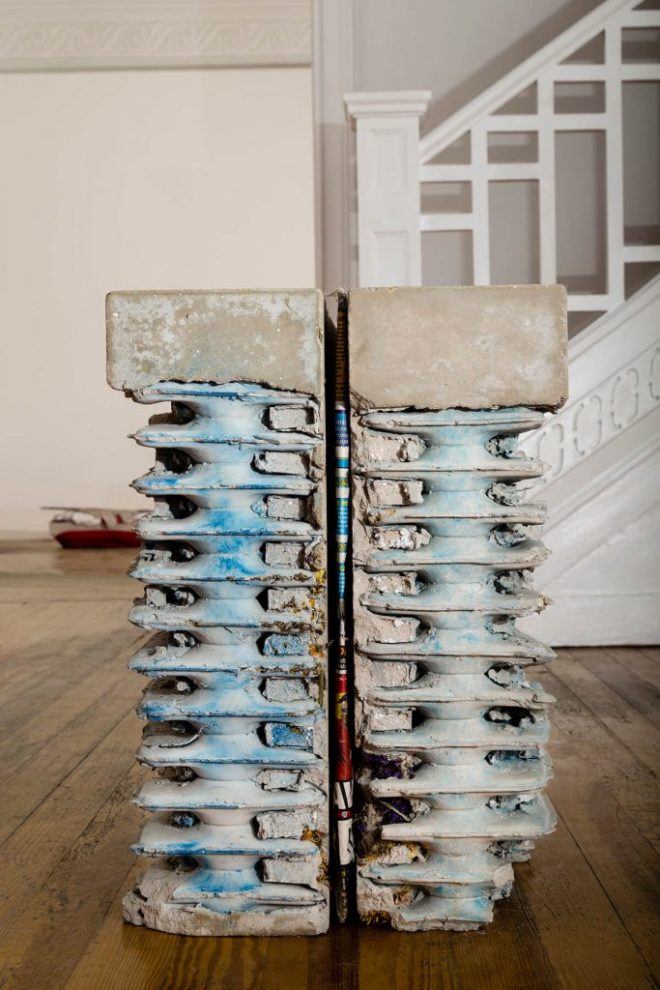
In an article about Franz Mesmer, the Austrian physiologist who claimed he could cure ailments through channelling “animal magnetism,” writer Christopher Turner says that “The Lyonnais Mesmerists purported that their patients could see their own insides when in somnambulistic trances, and thereby make uncannily accurate self-diagnoses .” Likewise, challenging the unidirectionality of vision towards the outside by turning it into the inside, seems to be running through June Crespo (Pamplona, 1982)’s recent work.
The sculptures manifest to a great degree as surfaces that have neither inside nor outside, or as entry points, orifices of two kinds: architectural (drainage, sewer) and bodily. The latter are suggested roughly through a human scale, and have a wretched character, something that features consistently in Crespo’s evocations of the body here and in previous works. The wax vessels that lend their mouth to these aspiring bodies form a sort of perineum; they are cheaply dressed in synthetic fabric: come and meet Gioni Feroli’s Lady Line. These same shapes appear also made of metal, strapped to the columns of the gallery space. Their openings almost secreting the left overs of their fabrication. The word “orifice” comes from the Latin orificium which in its turn is formed by os, or, ‘mouth’, and facere, ‘to make’. It is an active hole.
Crespo always makes sense of her work after the fact. It is a methodological strategy by which she produces forms and combines them, revealing a tension between the elements manifested in their friction, amalgamation or slight distance. This is the case of the pieces Architecture dismembered that produce a landscapes of some sort, a decaying industrial horizon, a ghostly accumulation. Crespo hints at a series of references to popular material culture but intentionally cuts them short before they can enunciate something. They are present but somewhat hollow.
There is a dialectical relationship between the fortuitous, timid forms that result from experimentation with new techniques and the memory embedded in the accumulation of practice. Craftsmanship serves to divert intentionality and point at the importance of the incidental that appears in the production process and finds its place once it has been born as form, as in the “defective” metal vessels, or the “broken” concrete surfaces whose holes allow to see through different layers of materials as they connect through the structure. This methodology flattens any hierarchical relationship between the elements that are combined in her works to become plinth, frame and sculpture at the same time.
Crespo’s work is the result of a series of conscious and unconscious decisions, a translation of the intuitive to the sensuous, of the latent to the visible, without giving into narrative – even if this can emerge later. There is a persistent transgression of form and recombination of elements through constant material transformation, especially in the pieces Instruments and Fetishes created by assembling wax objects made out of moulds of everyday things (vinyl records, markers, etc.) that once casted in metal are cut and welded again.
Ser dos [To Be Two] timidly quotes Luce Irigaray’s oeuvre of the same title, honouring indetermination and escaping identification. Catalina Lozano, 2017
Uma Certa Falta de Coerência. Rua dos Caldeireiros 77. 4050-140 Porto. Portugal
http://umacertafaltadecoerencia.blogspot.com/
Image: Juan Crespo
